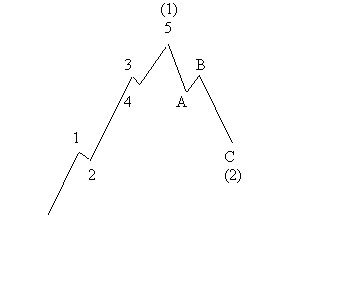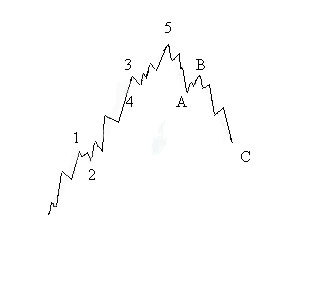- About MAA
- Membership
- MAA Publications
- Periodicals
- Blogs
- MAA Book Series
- MAA Press (an imprint of the AMS)
- MAA Notes
- MAA Reviews
- Mathematical Communication
- Information for Libraries
- Author Resources
- Advertise with MAA
- Meetings
- Competitions
- Programs
- Communities
- MAA Sections
- SIGMAA
- MAA Connect
- Students
- MAA Awards
- Awards Booklets
- Writing Awards
- Teaching Awards
- Service Awards
- Research Awards
- Lecture Awards
- Putnam Competition Individual and Team Winners
- D. E. Shaw Group AMC 8 Awards & Certificates
- Maryam Mirzakhani AMC 10 A Awards & Certificates
- Two Sigma AMC 10 B Awards & Certificates
- Jane Street AMC 12 A Awards & Certificates
- Akamai AMC 12 B Awards & Certificates
- High School Teachers
- News
You are here
Leonardo of Pisa: Bunny Rabbits to Bull Markets - Elliott Waves
In the early 1930s a retired accountant, Ralph Nelson Elliott, carried out a detailed study of the changes in the Dow Jones Industrial Average. For data, Elliot had at his disposal results of the roaring bull market of the 1920s followed by the Great Depression. He concluded that stock market patterns were not random but, instead, reflected cycles of human optimism and pessimism. His treatise, The Wave Principle, was completed by 1935. In it he claimed to have established principles that could be used to forecast market reversals!
Basically, he recognized a simple pattern in market fluctuations. The pattern of a rising market, he said, consists of an upward trend followed by a correction. In the figure, the upward trend rises to (1) and the correction falls to (2). The upward trend is broken into three peaks, labeled 1, 3, and 5. The correction has 2 troughs, labeled A and C. This suggests that the index moves three steps forward followed by two steps back.

The entire pattern consists of 8 direction changes or waves, 5 in the impulsive phase and 3 in the corrective phase. Each of these is a Fibonacci number. Elliot claimed further that a closer examination of each wave -- for example, daily fluctuations instead of weekly -- would reveal a similar breakdown, illustrated below.

The rising side is broken into 21 wavelets (8+8+5), the falling side is broken into 13 wavelets (8+5). So far, the analysis decomposes the original wave into 34 parts, another Fibonacci number. This could go on forever but Elliot ended at 144, claiming that this is the largest number of practical value.
Later refinements of Elliot's theory relate the Golden Ratio to the depth of the wave.

Wave analysis of real life market indices is highly technical and subjective. There are many instructive websites explaining principles and applications that can be accessed for further research.
The overall outlook of Elliotticians today is very pessimistic. They believe we are entering a correction from a very large impulsive peak 5. As the theory is applied today, the correction will end at 38.2% above the level at which this great wave began. There is, however, no consensus as to exactly what that date may be. One ambitious project analyzes the last 12,000 years according to these principles!
More information about the Fibonacci numbers and the Golden Section
Sandra Monteferrante, "Leonardo of Pisa: Bunny Rabbits to Bull Markets - Elliott Waves," Convergence (August 2011)




